Modern Perforating Techniques: Key to Unlocking Reservoir Potential
Being the link between wellbore and reservoir rock, perforating is a key part in a well completion. Most think of perforating as the act of running guns loaded with shaped charges into a well on wireline or tubing and blasting holes as deep as possible into the formation. However, recently evolved techniques and models have clearly showed that the focus should be on perforating for productivity, rather than perforating for penetration. The presentation leads the audience through the research, experiments, and models that show how today’s industry can maximize reservoir potential with perforated completions.
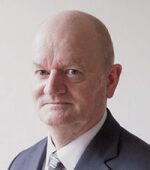
Andy Martin is a technical adviser in perforating services at Schlumberger. He joined the company in 1979 as a field engineer and has been involved with wireline field operations, teaching cased hole services, and technical writing. In 1996, Martin moved to Rosharon, Texas, where Schlumberger develops perforating systems, makes shaped charges, and conducts perforation research. He holds an MA in engineering science from the University of Oxford.
Uncertainty Assessment Using Reservoir Simulation Model—Practical Guidelines
While capturing uncertainties in forecasts is required in all situations, developing multiple history-matched models is also an important goal for brownfield situations. The presentation will provide systematic and practical guidelines for uncertainty assessment work using reservoir simulation models. The steps involved in an uncertainty assessment, including the selection of uncertain parameters and their ranges, practical experimental design methods, appropriate response or tracking functions (or variables), and data analysis techniques will be discussed. The lessons learned from a base-case history-matched exercise for a brownfield situation, and earth modeling/petroleum engineering knowledge in setting up appropriate parameters and ranges are emphasized. The session will stress the engaging of all operation and facilities personnel in developing an adequate forecast problem description and economic success metrics.

Anil Ambastha is the reservoir simulation unit lead at Chevron Nigeria with 26 years of experience in the oil and gas industry. He specializes in applied reservoir simulation, pressure transient analysis, and thermal recovery. Ambastha holds a PhD in petroleum engineering from Stanford University. He served as executive editor of SPE Reservoir Evaluation & Engineering from 2008 to 2011. He is also an SPE Distinguished Member and a recipient of a Lester C. Uren Award and a Distinguished Service Award.
Well Design and Integrity: Importance, Risk, and Scientific Certainty
The complexities and costs of well designs have increased significantly to meet the challenges of ultradeep wells exceeding 30,000 ft; ultrahigh pressure, high-temperature wells; and ultradeepwater. As a consequence, the risk to companies designing wells for these applications has increased. As the industry knows from recent incidents, the consequences of failures are enormous, and minimizing the risk of catastrophic failures is imperative. It is not coincidental that the engineering tools for well design have become more complex. Tools such as nonlinear finite element analysis, computational fluid dynamics, and multiphysics software are now commonly used. What are these tools and the input data required for an output of dependable and accurate results? This presentation will summarize the applications of these tools, exhibiting their input requirements, and their output interpretation and quality.

Brun Hilbert is a principal engineer at Exponent Failure Analysis Associates’ mechanical engineering practice with 30 years of experience. He analyzes the root causes of failures, and assists clients in failure prevention, design improvement, and risk minimization. He has also conducted applied research at Exxon Production Research Company. Hilbert holds a BS in mathematics and an MS in mechanical engineering from the University of New Orleans, and a PhD in rock mechanics from the University of California at Berkeley.
First-Ever Comprehensive Environmental Characterization of Hydraulic Fracturing for Shale Oil and Gas Production
The well completion process of high-volume hydraulic fracturing has become a touchstone for opposition to the development of oil and gas resources from shale source rocks. Although the development of shale gas and oil has brought substantial economic, geopolitical, and climate change benefits to the United States, hydraulic fracturing has displaced global climate change as the most controversial environmental policy issue. This presentation includes a peer-reviewed study that quantifies the effects of two specific high-volume hydraulic fracturing jobs in 14 environmental resource categories. The goal was to provide factual information supported by a high-quality data set to guide policy making. None of the measurements detected a change due to hydraulic fracturing, including microseismic effects, ground motion and induced seismicity, water quality, methane migration, community health, well integrity, and fracture containment to the target zone.
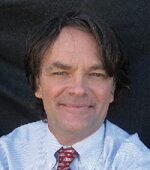
Daniel Tormey is an expert on energy and water at Environ Corp. He studies the environmental aspects of all types of energy development, with an emphasis on oil and gas. He has participated in assignments in onshore, offshore, near shore, estuarine, riverine, and glacial environments in many countries. Tormey holds a BS in civil engineering and geology from Stanford University and a PhD in geology and geochemistry from the Massachusetts Institute of Technology.
Beyond Volumetrics: Unconventional Petrophysics for Efficient Resource Appraisal
Unconventional reservoirs require a new petrophysical paradigm and must go beyond volumetrics. An efficient unconventional resource appraisal should consider not only the static (storage) and dynamic (flow) properties within the context of the petroleum system, and the current day pore geometry and fluid saturation distribution, but also the geomechanical stress regime and its implications for efficient completion design and reservoir performance prediction. Reservoirs with high potential for deliverability should be targeted for development; these zones will dominate well and field performance. The effective application of integrated subsurface and completion workflows leads to improved capital efficiency and well performance through increased well potential, increased ultimate recovery, and reduced costs.
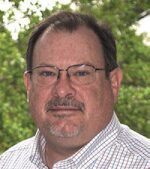
David Spain is a senior adviser in unconventional gas petrophysics in the BP upstream technology group. He is currently seconded to the Khazzan field development project in Oman. Spain has more than 30 years of experience in resource appraisal, field development, and integrated reservoir management. He has published numerous papers on integrated petrophysical solutions in unconventional reservoirs. He holds a BS in geology from Murray State University, an MS in geology from Vanderbilt University, and is a graduate of the Amoco Petrophysics Training Program.
Cement Testing: Are We Looking at the Right Things the Wrong Way?
The most important aspect in wellbore construction is creating and maintaining wellbore integrity and zonal isolation. The potential of freshwater contamination has captured the attention of the public and media. A crossflow between productive intervals or saltwater zones can result in environmental and legal challenges, and lost production. The number of wells developing annular pressure over time has become a concern and expense for operators. The design and placement of a competent cement seal in the annulus is critical in addressing these issues. This presentation describes how the testing has progressed from Code 32, the first API code, to the present day ISO and API guidelines. The audience should gain a better understanding of what cement is needed to do and the laboratory tests required to make sure it does.

Don Purvis is an independent technical consultant who has done extensive research on cement flow dynamics and testing methodology. He has held research, engineering, and management positions with major service companies and operators. He holds two process patents and has authored multiple technical papers and journal articles. He has given technical presentations on good cementing practices both inside and outside of the oilfield community. Purvis holds an electrical engineering degree from Oklahoma State University.
The Value of Assessing Uncertainty (What You Don’t Know Can Hurt You)
The petroleum industry has underperformed for decades because of project evaluation methods that do not fully account for uncertainty. Chronic biases, particularly overconfidence and optimism, persist because there has been little emphasis in petroleum literature on the true cost of underestimating uncertainty and on how to quantify uncertainty reliably. This presentation will discuss the results of recent work assessing the monetary impact of chronic overconfidence and optimism on portfolio performance. Decision making will be optimal in the long run only when probabilistic forecasts are well calibrated, that is, P10s are true P10s, P90s are true P90s, and so forth. Changing corporate culture to consistently produce well-calibrated probabilistic forecasts will require education on the importance of look backs and calibration, as well as changes in business processes and incentive structures. A reliable assessment of uncertainty may have the potential to significantly improve company and industry financial performance.

Duane A. McVay is the Rob L. Adams ’40 Professor in the Department of Petroleum Engineering at Texas A&M University. His research is focused on the uncertainty quantification for production forecasting and reserves estimation in oil and gas reservoirs. He joined the university in 1999 after spending 16 years with S.A. Holditch & Associates, a petroleum engineering consulting firm. McVay holds BS, MS, and PhD degrees in petroleum engineering from Texas A&M University. He is a Distinguished Member of SPE.
How to Save Time, Money, and Reduce Personnel Exposure Using Unmanned Aircraft Systems
Small unmanned aircraft systems (UAS), or drones, deliver actionable data and reduce costs and personnel risk. This presentation takes the audience on a journey from the first military applications and academic research to the present. From offshore drilling to downstream applications, this talk will introduce the various types of data that are being acquired and are acquirable, which were previously very expensive or almost impossible to collect without UAS. The presentation encourages companies to act early, before demand outstrips supply of desirable unmanned assets and qualified UAS operators, using a conservative, risk-based approach. Companies should quantify the value of early detection to determine inspection intervals and the lost savings that they are willing to accept. The cost of inaction or delayed action is quantifiable and substantial.

Dyan M. Gibbens, chief executive officer of Trumbull Unmanned, formerly served as a US Air Force acquisitions officer supporting Air Force One and Global Hawk engineering and logistics. She supported hydrocarbon sequestration using drones and is working with NASA on unmanned aerial vehicle-based methane detection. Gibbens holds a BS in civil engineering from the US Air Force Academy and an MBA in corporate strategy from Oklahoma State University, where she is finishing a PhD in industrial engineering and management.
Managing Dual Careers—Work-Life Integration in a 24/7 World
The “big crew change” has altered the workforce in both visible and invisible ways. Three SPE Talent Council surveys and a Society of Exploration Geophysicists survey provide valuable insights into how to enhance employee retention and increase diversity in management. While more women are working in the petroleum industry, the transition from a workforce largely composed of dominant earners to one with many dual career couples has also occurred. The survey findings suggest that the lifestyle differences between dominant earners and dual career workers introduce misunderstandings about career dedication and work ethics that can lead to attrition. Career planning that better balances specific opportunities with flexibility, and leverages 24/7 technology-enabled work styles can build and retain a more diverse and highly motivated workforce.

Eve Sprunt is an oil and gas consultant with 35 years of experience working for major oil companies. She holds BS and MS degrees in earth and planetary sciences from the Massachusetts Institute of Technology and a PhD in geophysics from Stanford University. Sprunt became an SPE Distinguished Member in 2000, served as 2006 SPE President, and was made an Honorary Member in 2010. She also received an Achievement Award from the Society of Women Engineers.
Is the Oil Industry Paying Enough Attention to Process Safety?
With recent highly publicized accidents in the oil industry and the continuing concerns about its public image, process safety remains a subject of great interest in the industry. But are we doing enough? Is the oil industry paying too much attention to statistics on lost time injuries, and has perhaps not given enough sustained focus on process safety, thus obscuring the big picture? This presentation outlines some case histories of major accidents. It discusses the industry’s efforts to develop performance indicators for process safety and ongoing efforts to promote it. The similarities and differences between occupational safety and process safety will be discussed. A key concept is to show that the successful management of one does not necessarily assure management of the other. The human and financial costs of major accidents in the industry far outweigh any saving in investments related to process safety.
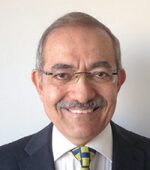
Hisham Saadawi is a consultant at Ringstone Petroleum Consultants with more than 35 years of experience in design, construction, startup, operation, and project management of oil and gas processing facilities. He holds a PhD in fluid mechanics and thermodynamics from the University of Manchester and has extensive expertise in process safety. Saadawi has served on the Journal of Petroleum Technology editorial committee and received an SPE Regional Award for Projects, Facilities and Construction in 2011. He was a Distinguished Lecturer during the 2010–2011 lecture season.
Increasing Production With Better Well Placement in Unconventional Shale Reservoirs—Challenges and Solutions
The idea that the stimulation process “will take care of the geology” in unconventional reservoirs is proving false. Unconventional reservoirs are often regarded as resource plays with little demand for reservoir analysis beyond simple geosteering techniques during the development campaign. This leads to the common practice of stimulating wells with equally spaced stages and treating all the stages exactly the same, with no regard to the nature of the rock being treated. Clearly the stimulation process alone cannot mitigate the impact of geology in unconventional reservoirs; however, mechanisms do exist for improving results in them. Given a map of geomechanical properties along the wellbore, completion engineers can optimize the position of plugs or packers, and stimulation engineers can fine-tune the design of the treatment applied to the rock. By re-establishing the link between production and geology, these methods can decrease the exploitation costs of unconventional reservoirs.

Jason Pitcher is the director of consulting practice at Cameron. He has more than 24 years of experience in drilling, completions, and production solutions delivery. Pitcher holds a BS in geology from the University of Derby and an MS in mineral exploration from Imperial College London. He has co-authored more than 25 papers and articles on logging while drilling tools, petrophysics, geosteering, and unconventional reservoirs. He was a Distinguished Lecturer during the 2012–2013 lecture season.
Think Outside of the Box—Nano Drug Delivery Technologies for Oilfield Applications
To improve oil and gas recovery, operators inject all kinds of expensive chemicals into the subsurface. Because of the often hostile downhole environment, most oilfield chemicals cannot survive the extremes of temperature, salinity, and pH level. There is a strong incentive to develop improved techniques to protect and control/delay the release of oil and gas chemicals so that they can be successfully transported to the target locations underground. Based on the drug delivery technologies from the pharmaceutical industry, a chemical delivery system was developed using nanoparticles to trap and protect oilfield chemicals from the hostile underground environment. Nanoparticles must effectively stabilize, deliver, target, and/or sustain the effects of the oilfield chemicals. In this talk, the basic concepts behind the development of a cost-effective nanoscale chemical delivery system will be discussed. Examples of applications in conformance control, hydraulic fracturing fluid cleanup, and surfactant transport will be presented.

Jenn-Tai Liang is a full professor and holder of the John E. and Deborah F. Bethancourt endowed professorship at Texas A&M University’s Department of Petroleum Engineering. He has researched the use of nanotechnologies for conformance control, flow assurance, and hydraulic fracturing fluid cleanup. Liang holds a BS in chemistry from Tamkang University, and MS and PhD degrees in petroleum engineering from the University of Alabama and the University of Texas at Austin, respectively.
Assessing and Applying Petroleum Engineering Data From the 2010 Macondo Blowout
On 20 April 2010, the Macondo blowout in the US Gulf of Mexico killed 11 men, sank the Deepwater Horizon drilling rig, and devastated the Gulf. Authorities queried mechanical systems, operating decisions, corporate cultures, safety procedures, and testimonies by survivors, academics, experts, and executives. Meanwhile, industry personnel need succinct, nonlitigious, technical answers to fundamental questions about the cause of the blowout for application to future projects. The chain of events includes forming an annulus-to-wellbore leak; exacerbating the leak; testing and declaring the well secure; and allowing the well to flow until too late, even for the blowout preventers. From the presentation, attendees will see by example the importance of applying petroleum engineering fundamentals and logic to day-to-day drilling work in real time, whether onshore or offshore, and deep or shallow.
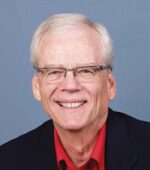
John Turley served as the manager of worldwide drilling and vice president of engineering and technology at Marathon Oil. Before joining the company, he taught petroleum engineering at Marietta College. After his retirement, he wrote and published The Simple Truth, which examines the engineering causes of the Macondo blowout. Turley holds a professional degree in petroleum engineering from the Colorado School of Mines, an MS in ocean engineering from the University of Miami, and an executive management degree from Harvard University.
Completion Scorecard: The Importance of Scoring High
Completion performance and reliability can have a significant impact on the economic viability and profitability of a project, particularly for deepwater developments in which the cost of intervention and completion failure can be very high. Even more, suboptimal completions may expose a company to substantial environmental risks and potentially jeopardize its public image and reputation. The lecture will discuss key lessons learned and best practices identified from look-back studies conducted on frac-pack completions in several deepwater fields across the world. The assessment relies on the use of a proprietary scorecard, which grades the quality of the completion based on key aspects of the well design and installation process, including rock stresses and well orientation, debris management, perforating, fracture design and execution, fluid loss management, and mechanical issues with hardware components.

Maricel Marquez is a petroleum engineer at Chevron with more than 10 years of experience. She has worked in research and development, completions, production, reservoir engineering, and project management. She was recently elected as communications director of the Women’s Network Executive Committee at Chevron. Marquez holds a PhD from the University of Oklahoma. She received the 2014 Regional Completions Optimization and Technology Award from SPE Gulf Coast North America.
From 3D Pore Scale Imaging to Reservoir Inputs: Next Generation Reservoir Characterization and Description
Digital rock analysis is an emerging technology that allows an unprecedented quantitative understanding of the pore scale at which all reservoir processes operate. Historically, digital rock projects have focused on core analysis applications, characterizing details at the pore scale, and ensuring that the physics incorporated is correct. While crucial, it has been a fundamental limitation to creating widespread commercial value and real growth to date. The lecture will highlight how digital rock analysis can aid geoscientists and reservoir engineers today. It will describe examples of how reconciliation and integration of different data types from a fundamental understanding of the pore scale adds value. In particular, the work is used to offer fast turnaround times, aids in the understanding of unconventional reservoir core material, and explains uncertainties and trends from laboratory measurements.
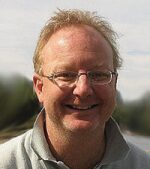
Mark Knackstedt is the chief technology officer at FEI Lithicon Australia and a professor in the Department of Applied Mathematics at the Australian National University. He is a current and past Society of Petrophysicists and Well Log Analysts distinguished speaker and was awarded the George C. Matson Memorial Award from the American Association of Petroleum Geologists in 2009. Knackstedt was presented with Eni’s New Frontiers in Hydrocarbon Research Prize in 2010. He holds a PhD in chemical engineering from Rice University.
Bridging the Gap Between Drilling and Completions: Challenges and Solutions in Horizontal Wells
Economic development of low-permeability, unconventional reservoirs has necessitated the development of advanced horizontal drilling, completion, and stimulation techniques. This presentation starts with two questions. Does completion technology lag behind drilling technology? Can we drill longer wells than we can effectively complete/stimulate? For the resource plays of today, the challenges for completion technologies to keep pace with drilling advances are different from the past. Economic, supply chain, logistics, and environmental challenges may present the largest hurdles. The presentation concludes with the questions: Are completion engineers prepared to effectively stimulate and complete a 3-mile lateral? What will future field developments look like and what kinds of new completion technologies are required? Can we bridge the gap between drilling and completion in unconventional reservoirs?

Mary Van Domelen is an engineering adviser at Continental Resources. She has 30 years of experience in research and practical application of well completions. Before joining the company, she worked for Maersk Oil and Chesapeake Energy in horizontal drilling and completion operations. She has co-authored more than 30 papers and holds several patents. Van Domelen earned a BS in chemical engineering from the University of Oklahoma. She has participated in organizing committees of SPE conferences, applied technology workshops, and forums.
LNG Basics for Petroleum Engineers
While many remote parts of the world and North America are awash with natural gas, Europe, South America, and the vibrant economies of the East cannot get enough of the clean-burning, environmentally friendly fuel. The problem is transporting the compressible fluid long distances, across major bodies of water. For markets more than 1,500 miles away, liquefied natural gas (LNG) has proved to be the most economic option. By refrigerating natural gas (primarily methane) to –260°F (–162°C), thereby shrinking its volume by 600:1, LNG can be transported in large, insulated cryogenic tankers at a reasonable cost. This talk will present the audience with a clear understanding of the technologies, equipment, and process choices required for a successful LNG project.

Michael Choi is a retired process engineering fellow at ConocoPhillips’ global production department. He was the lead process design engineer for the Qatargas 3 LNG project. His work led to a number of SPE publications and six US patents for separator design, emission control systems for glycol dehydrators, and subsea processing and storage systems. Choi holds a BS in chemical engineering from the University of Southern California. He was a Distinguished Lecturer during the 2012-13 lecture season.
Carbonate Matrix Stimulation: A Poorly Understood & Often Under-Optimized Technique
Matrix stimulation treatments in carbonate reservoirs are generally considered low risk. Production increases from these treatments are routine and the advantages of these treatments are perceived to be high. However, many treatments realize only a small fraction of the true well potential. This lecture will start with a brief introduction to matrix stimulation in carbonates and describe typical design elements. It will be followed by design challenges, such as treatments in long heterogeneous intervals, fractured reservoirs, and mature reservoirs. The influence of rock type, treatment fluid type, and operating conditions will be discussed. The available technologies for fluid placement will be presented in the context of formation complexity and the length of producing interval. The design workflow proposed will ensure that all variables are addressed systematically.

Murtaza Ziauddin is an adviser on matrix stimulation and production chemistry at Schlumberger. He has more than 18 years of production engineering experience and has co-authored three SPE books. His most recent book is,Chemistry for Enhancing Production. He has authored 27 technical papers and holds 14 patents. Ziauddin earned a BS from the University of Houston and a PhD from the University of Minnesota, both in chemical engineering.
Innovative Laboratory Tools and Methodologies for Quicker and More Accurate Reserves Assessment
For oil and gas companies, accelerating the process of assessing reserves is a strategic imperative. Often, core analysis appears to be a bottleneck for achieving this objective. Laboratory results must not only be accurate, but also quickly available. In some instances, the challenge can be met by rethinking the way in which certain well-established things are done. No sophisticated tools are required, just a change of perspective. By combining centrifuge and nuclear magnetic resonance measurements, it is possible to produce an exhaustive compilation of special core analysis data for log interpretation and reservoir modeling in one day by using just a core sample. The central message is that even long-established laboratory practices may have room for improvement, and sometimes relatively small changes generate significant benefits.
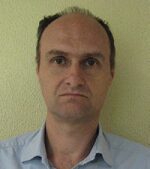
Nicola Bona is a technical leader of Eni’s petroleum engineering laboratories. His research includes designing equipment and experimental protocols aimed at increasing the speed and accuracy of petrophysical measurements. His work has advanced the use of drill cuttings for reservoir characterization and dielectric measurements to assess rock wettability, and new methods for evaluating the electrical response of rock. Bona has authored more than 30 technical papers and holds two patents. He earned a degree in plasma physics from the University of Milan.
Shale Resource Assessment & Development—Full Life Cycle Integrated Approach
A full life cycle integrated approach for shale resource plays is essential to establishing value creation and ensuring reserves and production growth. With this process, key issues and uncertainties in shale resource development are resolved as plays evolve from concept screening and exploration and resource assessment to full development. The integrated approach relies on field demonstrations and mechanistic studies. The design, planning, and implementation of systematic and scalable field demonstrations are essential elements for addressing strategic, development, and operational issues. Mechanistic studies are used for understanding the key production drivers. Shale gas productivity is typically much lower than conventional reservoir systems and often lower than tight gas reservoirs. The flow behavior in these systems must be understood and quantified in order to effectively characterize and predict well and reservoir performance.
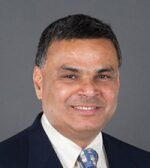
P.K. Pande is the director of reservoir technology at Anadarko Petroleum. He was closely involved with the Prudhoe Bay Miscible Gas Project and served as a project manager for the US Department of Energy’s flagship project on improved recovery and reservoir characterization methods for shallow-shelf carbonate reservoirs. Pande holds a BS in chemical engineering from the University of California at Berkeley and an MS in petroleum engineering from New Mexico Institute of Mining and Technology. He was a Distinguished Lecturer during the 2012–2013 lecture season.
Is There a Holistic Approach to Sand Production and Sand Management?
As we work in more challenging environments, such as deep water, heavy oil, and high-pressure/high-temperature wells, reservoirs become more complex and more costly to drill and complete. Downhole sand control methods significantly increase the complexity and cost of the completion and challenge the economics of field development. Is downhole sand control required on all wells that have a potential to produce sand? When the produced sand volume is insignificant, can the sand be managed at surface? Completions and workovers would be much simpler and cheaper without downhole sand control. Well production would also increase without downhole sand control. This talk addresses how operators can take a holistic approach to sand control.

Peng Ray is a research scientist at Chevron Energy Technology Company and has conducted research on geomechanics-related issues for the past 25 years. Her primary interests are sand production prediction, stress determination, rock strength determination, and wellbore stability. Ray has a BS in mechanical engineering from Beijing University of Science and Technology and an MS in geophysics from Texas A&M University. She has served as chairperson, secretary, and treasurer of SPE’s Southwest Oklahoma Section.
Making Better Appraisal & Development Decisions: Using Decision Risk Analysis & Value of Information
Behavioral science suggests that human nature favors decisions that satisfy, not necessarily those that optimize. Often value is left on the table, particularly when risks and uncertainties are involved. Decision risk analysis (DRA) is an approach that helps its users to optimize, not just survive. DRA is a structured process involving both facilitation and modeling that helps stakeholders optimize their decision making in the face of risks and uncertainties. This presentation on DRA focuses on a tool in the armory known as value of information (VOI) analysis. If an operator is facing a number of decisions with outcomes that are uncertain, and there is an opportunity to acquire additional information, which costs money and/or time, then VOI analysis will be helpful.

Pete Naylor is the head of DRA at BG Group. For the past 15 years, he has led DRA projects aimed at optimizing investment decisions. He has 30 years of experience in the oil and gas industry. Naylor holds a BSc in physics from the University of Birmingham and a PhD in chemical engineering from the University of Exeter. He is a fellow of the Institution of Chemical Engineers. Naylor received an SPE Regional Service Award in 2010 and has published more than 35 papers.
Artificial Lift Applications in Unconventional & Tight Reservoirs
The unique challenges of hydrocarbon production from shale reservoirs have required operators to take a fresh approach to asset development. Decisions about well placement, geometry, completion, and production are interrelated and must be addressed as part of life cycle planning. Artificial lift systems must be configured for rapidly changing and dynamic production environments. Migration from one lift technology to another is often required for wells that typically experience steep production decline rates. This presentation discusses the unique challenges of unconventional production and presents current production trends supported by field examples. Recommendations for optimizing production from shale and tight reservoirs will be presented.

Rajan Chokshi is vice president of training and development for artificial lift and production optimization systems at Weatherford. Over the past 30 years, he has worked on petroleum and software engineering projects in the areas of multiphase flow, artificial lift design, and production optimization. He also teaches professional courses on these topics. Chokshi holds an MS in chemical engineering from the Indian Institute of Technology Kanpur and a PhD in petroleum engineering from the University of Tulsa.
Lessons Learned From Data Mining in Unconventional Reservoirs
The task of identifying key production drivers in unconventional reservoirs remains challenging, even after decades of exploration and production in North America, during which tens of thousands of horizontal unconventional wells have been drilled and completed. Tens to hundreds of variables, categorized as reservoir quality, well architecture, completion, stimulation, and production metrics, are involved. The author’s team has combined geographical information systems (GIS) analysis and multivariate analysis using boosted regression trees for improved data mining results, as compared with univariate methods. The lecture will discuss key elements of data mining in unconventional reservoirs to raise an awareness of cutting-edge statistical tools and methods being used in the industry. The presentation will provide examples of data mining projects in three shale plays.

Randy LaFollette is the director of applied reservoir technology at Baker Hughes’ pressure pumping services. With 37 years of experience in the industry, he is a subject matter expert in geoscience and petroleum engineering. He leads a team of experts responsible for conducting geospatial and data mining studies of stimulation effectiveness, comparing reservoir quality, well architecture, well completion, and treatments performed with production results. LaFollette holds a BS in geological science from Lehigh University.
Optimization of Multifractured Horizontal Completions: A New Industry Challenge
Drilling horizontally to create a platform from which many hydraulic fractures can be propagated is proving to be an effective completion method in producing hydrocarbons from ultralow-permeability sand, shale, and carbonates. However, optimization of these complex completions is presenting new challenges to the industry. Compared with vertical wells, in which openhole logging and cutting of core can be readily performed, there is frequently limited wellbore-specific data available from horizontal wellbores, due to the need to reduce cycle time, reduce risk, control costs, and other operational concerns. This presentation will describe the challenges and the methodologies being used to improve the understanding of hydraulic fracturing and support decision making in the completion and stimulation of multifractured horizontal wellbores. Examples from several horizontal development targets, including the Bakken and Eagle Ford shales, will be presented.

Robert Shelley is the director of well performance evaluation at StrataGen. During his 38-year career, he has developed an expertise in hydraulic fracturing and reservoir evaluation of low-permeability sands, shales, and carbonates. He has focused on completion and fracture design/evaluation of multifractured horizontal wells for the past 15 years. In addition to authoring more than 30 SPE papers and articles, he holds seven patents. Shelley earned a BS in civil engineering from Colorado State University.
Understanding Liquid Loading Will Improve Well Performance
Operators of natural gas wells have long used Turner equations to calculate critical gas velocity to keep gas wells unloaded. The original Turner method was developed for vertical wells with analysis performed using wellhead conditions. However, this methodology is only applicable to high-pressure, vertical wells with a simple completion geometry. Modern well design employs complex geometries, including slant, S-shaped, and horizontal well paths, as operators seek to reduce costs and the environmental footprint, while maximizing the production rate potential. Modern designs require special consideration in estimating critical velocity. The presentation will provide an overview of historical techniques for detecting liquid loading and modifications of the Turner method to address contemporary well designs.

Robert Sutton is an independent consultant. He retired from Marathon Oil after a 35-year career. He has authored 27 SPE papers, 10 journal articles, and a chapter in the Petroleum Engineering Handbook.Sutton holds a BS in petroleum engineering from Marietta College and an MS in petroleum engineering from the University of Louisiana at Lafayette. He received SPE’s 2014 Production and Operations Award and was a Distinguished Lecturer during the 2012–2013 lecture season.
Fiber Optic Sensing Improves Unconventional Reservoir Development
The spread of horizontal drilling and multiple-stage fracturing in unconventional reservoirs has revolutionized the oil and gas industry. As a result, engineers and geoscientists are using groundbreaking technologies to optimize field development strategies. Underground laboratories have become the new approach to solving complex problems such as landing interval, well spacing, and completion design. These laboratories integrate technologies such as fiber-optic sensing, offset pressure monitoring, microseismic acquisition, and tracers in multiple neighboring wells. This lecture will discuss completion design for fiber-optic distributed acoustic sensing and distributed temperature sensing and how this data is incorporated with other advanced monitoring techniques. Real life examples will be used to show how these new measurements can optimize completion design.
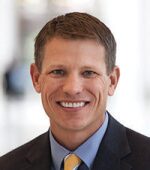
Trey Lowe is a completions technology manager at Devon Energy and has spent more than 15 years working on completion and production operations in various countries around the world. After designing and executing complex offshore completions, he began applying his experience to US unconventional plays. Lowe has a BS in chemical engineering from Oklahoma State University. He serves on the SPE Annual Technical Conference and Exhibition Well Completions program committee and has authored multiple technical papers.
Advances and Challenges in Dynamic Characterization of Naturally Fractured Reservoirs
The industry has recognized that dynamic reservoir characterization, from wellbore pressure to production behaviors, is a key driver for maximizing production and recovery. Accurate simulation requires appropriate modeling of the existing heterogeneities in the field. Most of the main fields around the world produce from naturally fractured vuggy reservoirs, in which matrix, fracture network, and high vuggy porosity are usually present. The effects of vugs on permeability is related to their connectivity. Also, some fractured reservoirs exhibit a fractal behavior, which describes fractures with different scales, poor fracture connectivity and disorderly spatial distribution. The behaviors of both fractured-vuggy and fractal reservoirs cannot be explained by the conventional dual-porosity model. This lecture addresses the above characterization approaches and reviews field applications using pressure transient and rate data. It also presents the current and a future vision for an appropriate dynamic characterization of these reservoirs.
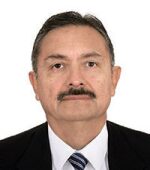
Rodolfo Camacho-Velazquez is a senior engineer at Pemex and has more than 30 years of experience in academia and industry. He has developed several well test analysis techniques and interpretation methods for production data. He has authored or co-authored more than 100 technical papers on petroleum engineering. Camacho-Velazquez holds MS and PhD degrees in petroleum engineering from the University of Tulsa. He is an SPE Distinguished Member and a recipient of the 2008 Lester C. Uren Award.
Laser Technology in Petroleum Engineering—It is Time to Bring Lab Success Downhole
The oil and the gas industry has attempted for many years to find a nondamaging alternative to well completion and stimulation to maximize well productivity and recovery. Laboratory research has proven the ability of high-power lasers to drill through all types of rocks under simulated reservoir conditions at high efficiency. Many objectives related to improvement in fluid flow and production, faster drilling, and larger perforations can be achieved with this technology. However, there are several challenges that must be evaluated and overcome before in-situ lasing becomes economically viable. This presentation will cover the latest developments, challenges to be overcome, and upstream applications for laser technology.

Sameeh Batarseh is the leader of the unconventional research team and high-power laser facility at Saudi Aramco. He researches several uses of high-power lasers in downhole applications with a focus on unconventional reservoirs. He has published 42 articles and holds 13 patents (eight in progress). Batarseh holds a PhD in petroleum engineering from the Colorado School of Mines. He served in SPE roles, including executive advisory, program committee member, and session chair, and has conducted and organized several SPE technical workshops.
Making Safety Personal in the Oil & Gas Industry
The achievement of safety excellence across the oil and gas industry requires multiple strategies if we are to eliminate fatalities in our efforts to explore for and produce hydrocarbons. One of the strategies is making safety personal for everyone in our workplace. This presentation will describe and illustrate several ways of making safety personal in the industry.
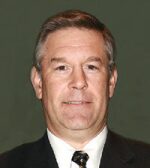
Warren Hubler has been the vice president of health, safety, and environment at Helmerich and Payne since 2000. His duties were later expanded to include professional development. He has also held various management positions, such as administrative manager in Gabon and corporate safety manager. Before joining the company, Hubler served for 7 years in the US Navy. He holds a BS in marine engineering from the US Naval Academy.
Optimism in Reservoir Production Forecasting—Impact of Geology, Heterogeneity, Geostatistics, Reservoir Modeling, and Uncertainty
The oil and gas industry uses static and dynamic reservoir models to assess volumetrics and to help evaluate development options via production forecasts. Elegant geological models are generated using sophisticated software without a full understanding of the limitations imposed by the data or the underlying stochastic algorithms. Key issues facing reservoir modelers that have been evaluated include use of reasonable semivariogram model parameters (a measure of heterogeneity), model grid size, and model complexity. However, reservoir forecasts tend to be optimistic. Knowing what workflow aspects may contribute to forecast optimism should enable the industry to generate more reliable forecasts and make better use of capital.
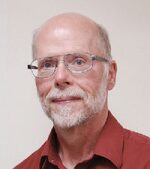
William Meddaugh is the RL Bolin Distinguished Professor of Petroleum Geology at Midwestern State University. Before joining the university in 2013, he had a 32-year career at Chevron, specializing in technical project management. He is the author or coauthor of more than 30 SPE and peer-reviewed technical papers on forecast optimism, reservoir characterization, and modeling. Meddaugh holds a PhD in geology from Harvard University. He is an associate editor of SPE Reservoir Evaluation & Engineering.
How to Predict Reservoir Performance With Subsurface Uncertainty at Multiple Scales
Subsurface uncertainty is one of the main challenges in using reservoir models to predict field performance for development and depletion planning purposes. The importance of reliable characterization of subsurface uncertainty and its impact on reservoir performance predictions is essential to sound decision making in the upstream industry, especially for large projects in complex geologic settings. Despite recent advances in reservoir modeling and simulation, reliable quantification of the impact of subsurface uncertainty remains difficult in practice. This lecture presents an analysis of the challenge and possible resolutions. Relying on computing power alone may not address the challenge. We must look at reservoir modeling and performance prediction holistically, from modeling objectives to appropriate techniques of incorporating reservoir heterogeneity into models.

Xiao-Hui Wu is a senior earth modeling adviser at ExxonMobil Upstream Research Company. He has experience in geologic modeling, unstructured gridding, upscaling, reduced order modeling, and uncertainty quantification. Wu holds a PhD in mechanical engineering from the University of Tennessee and has done post-doctoral studies in applied mathematics at the California Institute of Technology. He has been a technical editor of the SPE Journal and served on the SPE Reservoir Simulation Symposium program committee.
